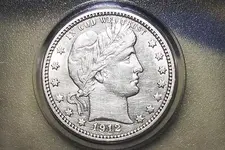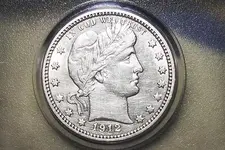Re: All the collectors say: DON'T CLEAN THEM!!!!!
Cleaning or polishing a coin in any way creates tiny scratches in its surface, which are readily identifiable to a collector as "whizz marks." If these are non-dug coins, a collector will not be as interested in buying them, and their value will be less as a result. Collectors will instead go for the coins that have not been cleaned, polished, dipped, etc.
In terms of dug coins, copper and nickel coins will be what they are--there is no way to eradicate the signs that a coin has been in the ground. Silvers are another story--which is why one should never field clean a silver coin by wiping it to see the date. If the coin was lost when it was uncirculated, or close to uncirculated, then wiping it will grind the dirt into the mirror-like surfaces of the coin, and it will be classified as a cleaned coin. In effect, its value will drop. And if you can't see the date yet, you have no idea whether that uncirculated merc is a 1941 or a 1916-D. The sad thing is that the Nicer a coin is, condition-wise, the more its surfaces can be harmed by field cleaning. So don't field clean!
Now, if you're not worried about the value of a modern mercury dime, and you dig one or have one in your collection that is oxidized or has other aesthetic problems, then if you want a nicer display coin, you can clean it. Its value is so low anyhow that it won't make much difference.
I have used baking soda to polish a badly oxidized, and badly worn (and common) "dug" Seated Dime. I wasn't that happy with the results. The coin looked unnatural. But it's personal preference.
Other methods for cleaning dug coins to remove the dirt from them are listed in the "Cleaning and Preservation" section--but the best cleaning techniques only remove the dirt, without damaging the surface of the coin, regardless of what metal the coin is made of.
Regards,
Buckleboy









